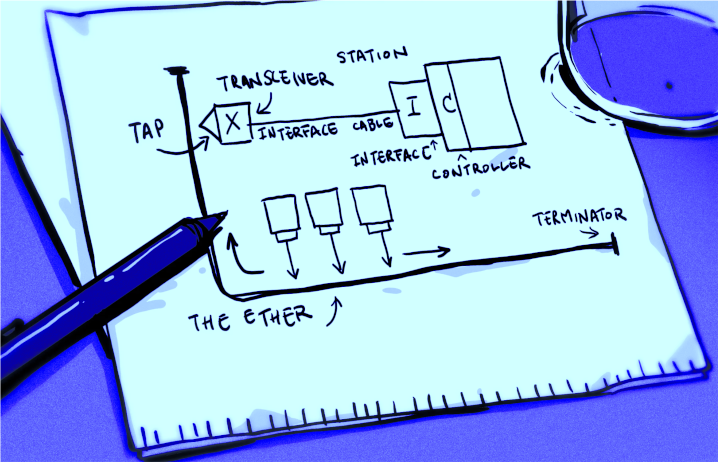Celebrating 50 Years of Ethernet: The Backbone of Modern Connectivity
On May 22, 1973, a groundbreaking technology was born that would forever revolutionize the way we connect and communicate. Ethernet, the underlying technology facilitating the transfer of data across networks, has now reached its momentous 50th anniversary. It was invented by Robert Metcalfe, David Boggs, Chuck Thacker, and Butler Lampson at Xerox Corporation’s Palo Alto Research Center (PARC).
This article celebrates 50 years of Ethernet!
Why is this still important now?
The main reasons are: Ethernet is the backbone of the internet and it is still being used after all these years. Many improvements have been made over time to make things faster and better, but the idea of sending packets of information over a wire remain the same. It is amazing that any fifty-year old technology has survived, let alone be in current use. That is the genius of the concept of Ethernet.
The birth of Ethernet
For those of you reading that were not born yet, let me put things into perspective: Computers in the 1950’s and 1960’s were massive. The took up floors of buildings. There were no personal computers at that time.
As corporations and government agencies acquired more of these computers they wanted them to “talk” to each other and share information. Starting in the 1960’s ALOHAnet used a technique called “Carrier Sense Multiple Access with Collision Detection” (CSMA/CD) over the air. This technique is still being used. The interoperability of many types of devices on a single communications wire became possible.
The Evolution of Ethernet
I remember the phrase from an old commercial: “You’ve come a long way baby!”. Ethernet has gone through many hurdles in speed.
- 1973 – Ethernet speed is only 2.94 Mbps over coax.
- 1980’s – IEEE Standard for Ethernet – 10 Mbps.
- 1990’s – 100 Mbs (Fast Ethernet)
- 2000’s – 1 Gbps (Gigabit Ethernet)
- 2023 – 10 Gbps and beyond
Ethernet has had a significant impact on the modern internet in various ways:
- Speed and Bandwidth: Ethernet technology has substantially increased internet speeds and bandwidth. Initially, Ethernet ran at speeds of 10 Mbps, but with advancements like Fast Ethernet (100 Mbps), Gigabit Ethernet (1 Gbps), 10 Gigabit Ethernet (10 Gbps) and beyond, it has enabled faster data transmission and increased network performance.
- Standardization: Ethernet has become the de-facto standard for wired LAN (Local Area Network) connections. Its clarity, reliability, and compatibility across different devices, operating systems, and vendors have contributed to the widespread adoption and interoperability of Ethernet-based networks.
- Scalability: Ethernet has allowed for network scaling and growth. Due to its flexible design, Ethernet can accommodate both small office networks as well as large enterprise networks, enabling the integration of multiple devices, such as computers, servers, routers, switches, and more.
- Internet Backbone: Ethernet has played a crucial role in building the internet backbone. As high-speed Ethernet connections became prevalent and affordable, it became feasible to establish faster and more reliable connections between internet service providers (ISPs), data centers, and other network infrastructure components, paving the way for faster internet connections globally.
- Internet of Things (IoT): With the rise of IoT devices, Ethernet has offered a reliable and secure means of connecting these devices to the internet. Ethernet connectivity enables seamless integration of IoT devices into existing networks, facilitating data exchange, control, and management.
- Multimedia Streaming: Ethernet’s higher speeds have been instrumental in supporting multimedia streaming services like video streaming, online gaming, and video conferencing. With faster Ethernet connections, users can access high-quality media content, interact with others via video calls, and enjoy lag-free gaming.
Conclusion
I used to teach a class about the history of computing at a couple of community colleges. I loved teaching those classes. Ethernet was “born” out of ALOHANet and the CSMA/CD way that they were transferring data. The evolution of a simple diagram (that was drawn on a coffee stained napkin) to ethernet today is amazing .
This month we celebrate Ethernet turning 50 years old. For any technology to stand up to and change for the better is a testament to the brilliance of the initial idea. I am happy to have been there for the milestone.